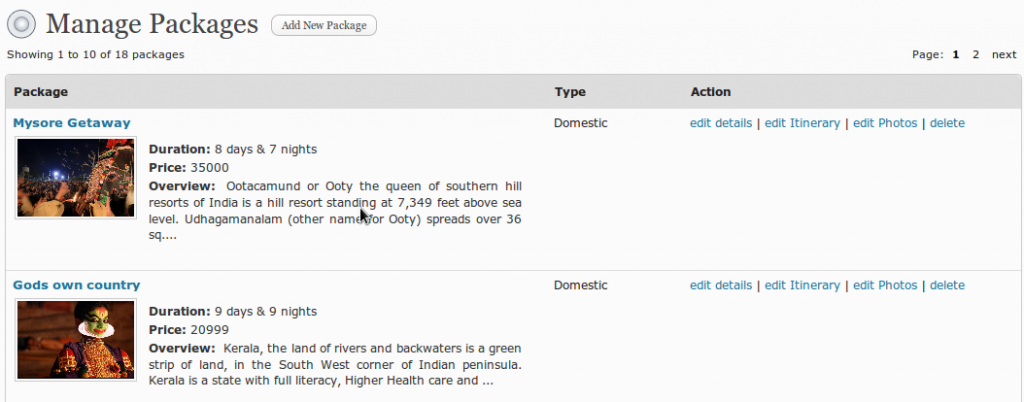There is a Plethora of blog posts on ‘X things you should do to organise a successful event’, this is the Plethora+1th one, but with a difference.
Two and a half years ago Prakash brought up the idea of organising a regional Ruby conference. Seemed doable. He had organised national level events before, didn’t seem like much of a trouble. One man brought up another and soon we were a team of 8 many programmers tasked to organize India’s first Regional Ruby conference. And thus GCRC – Ruby Conference of Bangalore was born.
Based on experience and proficiency, we delegated domains to ourselves. Swanand, Dheeraj, Prakash, Hemant, Emil, Leena, Tejas, Kashyap and I to name all, were to be accountable for a domain each and juggle in more than one sometimes. The idea was to develop GCRC like a program, in separate modules, compile parts and run. Except that things do not work in that fashion in the real world. Among many others, these are the practical aspects one should not miss.
Don’t Underestimate The Mess of Paperwork
Charged with organization & finance, our first target was to register GCRC as a legal entity. But then it’s not as simple as it sounds. Available resources do not enable easy comprehension by the common man or the software developers. We had to actually write a blog explaining the Visa process as there were many expatriate speakers. Maybe it’s kept that way on purpose, lest we would start taking up our own legal case as law permits. But that debate is for another day.
After having spent a lot of time figuring out the best suited legal entity for the activities GCRC intended to take up, we reached nowhere. Going by the better judgement of our CA, we decided to register GCRC as a trust, only to experience the sceptical nature of the system. It seemed like ‘Satyamev Jayate’ had given way to ‘Only In God we trust, rest have to follow a lengthy process’. Despite the non-profit nature of our endeavour, it took 3 months to complete the registration process. Our tryst with the system did not end there, everything we intended to do fell short of procedural expectations. Even opening a bank account required a lot of patience.
The last 2 years have witnessed easing up of those norms to a large extent. Those who still make a hue & cry about India’s rank in Doing Business Rankings should probably go back to history or be prosecuted for intolerance. That said, there is still a long way to go and India can do better.
My experience taught me that one should accrue due diligence & plan the paperwork as it can take a lot of time.
There are no Free Lunches or Sponsorships
Sponsorship as a word is generally misunderstood in the Indian context. It’s used for a host of meanings ranging from PR opportunity to product placement. GCRC being a community event did not completely fall in any of those categories. The turnaround time for marketing spend was higher, however the returns accrued were even higher over and after a period of time.
It takes a few big sponsors to make an event successful, till then you keep pitching. Every company in the industry was a prospect and that made it even difficult. There were the thrifty, the tight budgeted and the generous, and don’t forget the corporate marketers who want every bang for their buck. Nevertheless, the key to accumulating substantial sponsorship is to start early. Most companies follow an annual budgetary allocation scheme, being cash strapped or sitting on it towards the end of financial year. The likelihood of encountering the latter scenario being rare. Therefore, one should start approaching prospective sponsors as early as they can.
Even though, we were not the first to start looking for sponsorship, We were fortunate to have our share of sponsors.
Vendors are like kids, best dealt with care!
For an event of the scale of GCRC, you need multiple vendors. And there is a separate vendor for Audiovisuals, Delegate Parties, Accommodation, Printing etc. Event management is an area with plethora of service providers. Name the price and there is someone willing to do it. When faced with situations like these, use principles of operations management. Optimization helps you settle.
Irrespective of your choice of vendors and the quality of their service, it’s always advisable to maintain amicable relations with all, you never know who ends up becoming your saviour/provider in future.
Save for Rainy Days & Miscellaneous expenses
Expenses have a habit of exceeding the budget, being frugal helps if you don’t want to end up out of pocket. Probably that is why being frugal in engineering or expenses is such a fad!
No matter how much you plan, there are still likely to be items that you miss out. It’s a financial management best policy to account for them, so is in organisation.
Contribution First, Impressions Second
GCRC was fortunate to attract proposals from leading Open Source Evangelists of the software development world. I felt cursed at a personal level. The responsibility to select few eminent speakers from a host of proposals from across the world was a stressful job. Each proposal was so distinguished that at one point of time we considered picking from the draw of lots. Good sense prevailed and we applied and implemented the ‘Wisdom of the panel’. Wisdom of the panel is also called mutual agreement in common parlance. We selected speakers based on the average of scores allotted by panel members in various aspects like reputation of speaker, topic & its’ relevance to audience. Among other distinguished speakers, we were lucky to have Chad Fowler, General Manager – Wanderlust, Microsoft for the inaugural edition.
Decades of Ivy league hunting has left the corporate world prone to first impressions. It has now become a symbiotic relationship with one casting impression over the other. This impressionability of industry and individuals is leading us to making wrong choices.
Every pebble creates its own ripples, we should take due care in throwing our pebbles.
To err is human, fixing them is organisation
Even after having used your eye for detail or having stressed through those half rimmed eyeglasses, some tasks stay hidden to the normal eye and reveal themselves at crucial moments. We had one such experience with Event T Shirts. There was a communication goof up and we were left clueless while the T Shirts lay pretty with the hotel reception. Though it gave us a sleepless night, things like these happen & there is not much we can do about it. Interestingly, these goof ups seem to be governed by a law, ‘The Murphy’s Law’. So make your plans, execute them, till murphy ruins them!
Memories are your biggest ROI
Despite your best efforts, the probability of an event being successful is always 1/2. Having fun while organising is another independent event where the sample space is having fun while whatever happens. You realise this while trying to write a blog about it and all that you have to refer is a folder on drive. And that gives you one more recommendation.
Always hire a photographer, memories are the biggest take aways and what better way to lock memories than pictures.





